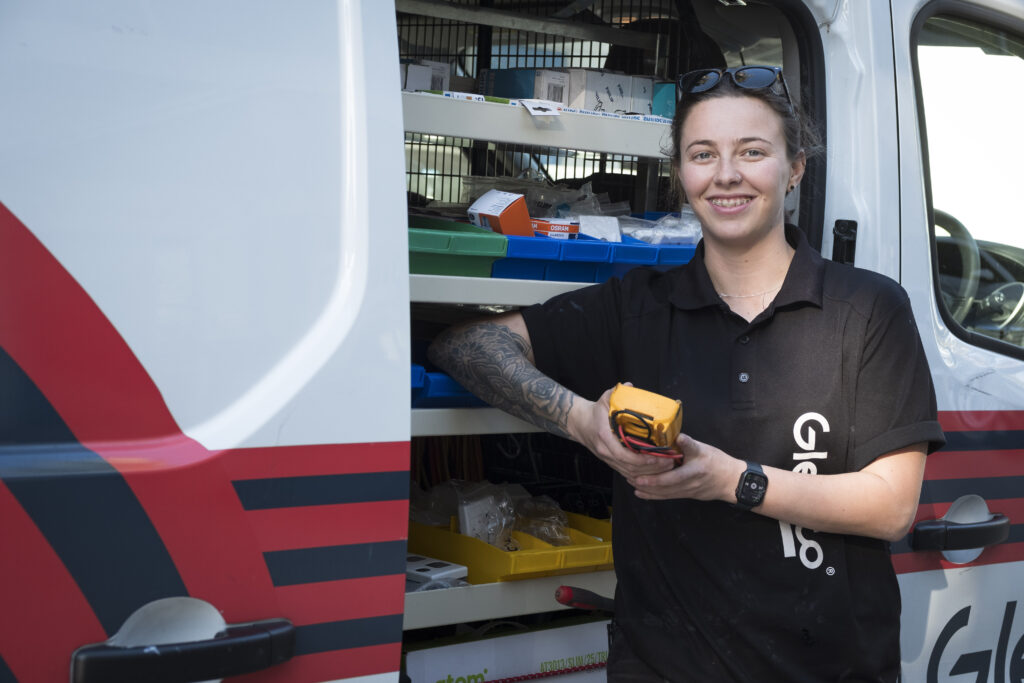Your home’s electrical panel is essential to keeping your lights on and appliances humming along. When everything is working fine, it’s easy to forget that this small but critical piece of equipment even exists. However, minor problems can develop into serious ones without regular care and maintenance, and these can eventually affect the safety of your home.
What Is an Electrical Panel?
The electrical panel is a small box that contains circuit breakers, which control the individual electrical circuits in your house. Electricity needs to flow, and circuits are the individual loops that it moves through. Most houses have multiple circuits to help spread the load out because modern lifestyles would overwhelm a single one.
Each circuit runs through its own breaker in the electrical panel. This is an essential safety device because the breakers are designed to turn off the electricity if they get overloaded. Without that, a sudden surge could damage your appliances and electronics or even cause a house fire.
Common Electrical Panel Problems
A variety of things can go wrong with your electrical panel, and you may have to deal with common issues at some time. Luckily, many are small and easy to fix, but some may require major repairs.
1. Tripped Breakers
Tripped breakers are usually not a big problem. Often they’re just a sign that you’ve plugged in too many appliances to the same circuit or otherwise have overloaded the electrical panel. They can also sometimes be caused by outside power surges, such as a lightning strike somewhere else in the electrical grid. Most of the time, you simply need to turn the breaker back on; be sure to unplug any devices you suspect may be causing the problem first.
2. Outdated Equipment
Some homes in Australia still use outdated technology, such as electrical panels with ceramic fuses. These old panels were originally considered safe and suitable for residential use, but as the amount of power the average consumer uses has increased, they’ve become a safety risk, although some older homes may still have them. These generally need to be replaced with residual current devices, which is a job that requires a professional electrician.
3. Rust and Corrosion
Corrosion is one of the most common long-term electrical panel problems. It occurs when the components are exposed to moisture, which reacts with the metal in the wiring. This can be through something as significant as a leak in the wall or something as easy to ignore as humidity in the air. If your electrical panel is located in a humid room, it may be wise to invest in a dehumidifier. Corrosion should be assessed by a qualified professional to determine whether it’s a safety issue and how to fix it.
4. Improper Wiring
This can be a little more difficult for the average resident to assess, but electricians run into it fairly frequently. It’s often the result of do-it-yourself repairs by previous residents. Problems can range from simply using the wrong size of wire for that circuit to making double-tap connections, where two wires are attached to the same lug. These can all cause issues with overloading and sparking.
5. Overcrowding
Overcrowding is just what it sounds like — somewhere along the line, someone tried to fit too many circuits into one panel. Double-tapping is a common indication of overcrowding because there simply aren’t enough individual connection points for all the wires. Some boxes simply look crowded as well. If things seem messy, haphazard and crammed together so tightly they’re difficult to work with, you may have an overcrowded panel.
6. Underpowered Panels
This problem often occurs when the electrical panel isn’t upgraded along with the rest of the system, or when new residents have a significantly increased power demand compared to previous residents. This demand places too much of a load on the circuits and panel, which leads to frequently tripped breakers and other problems. Often the only solution for this is to decrease power demands or to upgrade the panel.
How to Know if Your Electrical Panel Has a Problem
Although some issues can remain unnoticed for a long time, they may indicate problems. In addition to routinely checking your electrical panel for any visual issues, pay attention to these possible symptoms.
1. Circuits Tripping Frequently
Occasional tripped circuits are not a problem by themselves. Most people experience them from time to time, which is part of why the electrical panel is such an important safety device. However, if you’re experiencing them often, then something may be wrong. Frayed wires may be causing frequent small surges, or you may be routinely placing too many demands on your electrical system, which can lead to issues over time. An electrician can help you determine the cause of your problem.
2. Flickering Lights
Your electrical panel is supposed to help ensure your fixtures get a steady, reliable current, so if your lamps are regularly dimming and flickering, it could be a sign that something is wrong. This can also be caused by frayed wiring in your walls, loose connections or other potentially dangerous conditions.
3. Unusually High Bills
If you suddenly find yourself paying significantly more in your monthly utility bills without any increased usage, you may have an electrical problem. A faulty circuit can cause an apparent increase in usage, even if it isn’t actually being used. Getting an electrician to take a look could save you money over time.
4. Warm Walls Around the Panel
If you notice that your electrical panel and the surrounding wall are unusually warm to the touch, you may have an overloaded panel. The warmth is caused by excessive heat emanating from the overloaded wires.If you suspect your Sydney home has electrical panel problems, give us a call today on 02 9700 9996 or reach out to us online with any questions.







